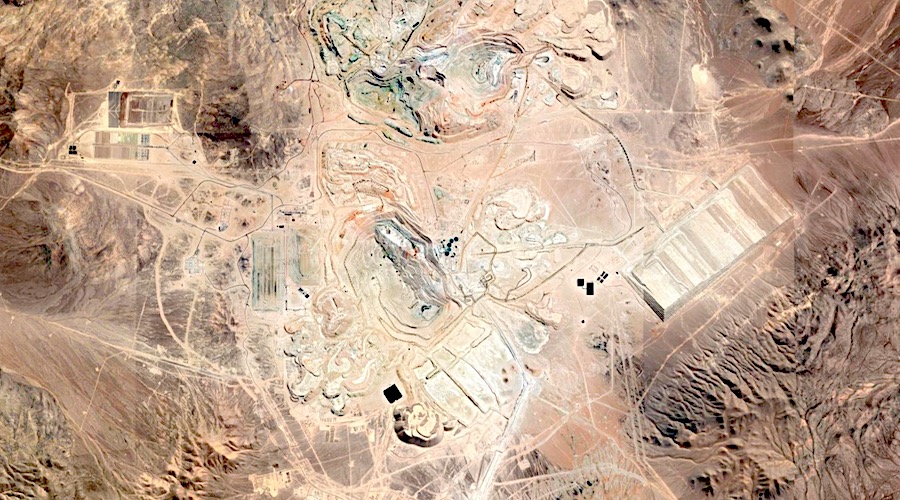BHP’s quick strike fix sets tone for labor talks amid copper rally

Mining giant BHP’s quick fix to a recent six-day strike at its huge Escondida copper mine in Chile could set the tone for upcoming negotiations elsewhere, with workers emboldened by high copper prices to push for a larger share of the profits.
Members of Escondida’s powerful Union No. 1 signed a sweetened deal on Sunday after walking off the job a week ago when contract talks collapsed, demanding better pay and benefits at the world’s biggest copper mine.
With a preliminary deal in hand already on Friday, a union lawyer had termed the agreement its “greatest recent victory.” It gave each worker a bonus and interest-free loan of about $34,000, compared with BHP’s original offer of some $28,900.
The quick turnaround contrasts with a 2017 walkout that dragged on for a month and a half, severely hitting BHP’s production, boosting global copper prices and even denting Chile’s GDP, heavily reliant on the red metal.
That was a scenario BHP wanted to avoid, particularly given strong current demand and global copper prices, analysts and other experts said. Demand for the metal is expected to shoot up, driven by the rise of electric vehicles and artificial intelligence technologies.
“The specter of the 44-day strike in 2017 created constant fear throughout the negotiations,” said Andres Gonzalez, an analyst at mining consultancy Plusmining. “BHP wanted to avoid something similar, which pushed them to seek an agreement.”
The two sides were also not so far apart when the strike started, he noted, making a middle ground easier to achieve.
The union’s position also appeared to be buoyed by the public perception of BHP having capital to spare. The miner is among the world’s biggest, turning out more than a million metric tons of copper a year at Escondida alone. It recently sought Anglo American in a $49 billion deal before scrapping the offer.
“Its current image is that of a company that has capital available to acquire assets or even invest in mergers … so the union was going to insist on achieving its goals,” said Cristian Cifuentes, an analyst at Chilean think tank Cesco.
Despite occasional strikes, Chile’s mining industry largely manages to renew workers’ collective contracts without conflict and even in advance, avoiding the risk of disrupting production.
Escondida is unique due to its large size and powerful union, which represents 2,400 people, almost all in key operational roles. The union has frequently clashed with BHP.
“Profits have to be paid to workers”
Analysts are now watching whether Escondida will set a precedent, but say other mines in Chile are not necessarily in similar situations, such as those that are smaller or grappling with problems in production and costs.
State-run copper giant Codelco, fighting to revive production from a 25-year low, is due for pay negotiations at its Ministro Hales mine in September, followed by the El Teniente and Gabriela Mistral mines in October.
At each site, the unions represent a substantial part of the overall workforce. Of particular note is El Teniente, one of Codelco’s biggest mines, a complex that represented more than a quarter of company copper production last year.
El Teniente workers are represented by five separate unions, but those combined represent more than 80% of total workers, or 3,200 people.
“What is worrying is how the unions at El Teniente will react,” Cifuentes said.
Workers from one of three unions at Lundin Mining’s Caserones copper mine in Chile also went on strike one day before the Escondida strike and remain so.
“The price of copper has been quite favorable in recent months… Those profits have to be paid to the workers,” said Marco Garcia, president of the striking Caserones union, though he admitted the Escondida union had more “productive pressure.”
“We know that the next three years will be quite profitable for Caserones in the production of copper,” he added. “That’s what leads us to our position and to be able to demand higher wages for the members of our union.”
The Caserones management is due to negotiate with other unions at the site later this year.
The head of Chilean mining association SONAMI, Jorge Riesco, cautioned that it is necessary to strike a balance between worker pay and industry competitiveness.
“It is legitimate for workers to aspire to better working conditions, but it is important that they also consider other aspects,” he said. “Issues of labor productivity and industry competitiveness should also be on the table.”
(By Fabian Andres Cambero and Daina Beth Solomon; Editing by Adam Jourdan and Matthew Lewis)
{{ commodity.name }}
{{ post.title }}
{{ post.date }}

Comments